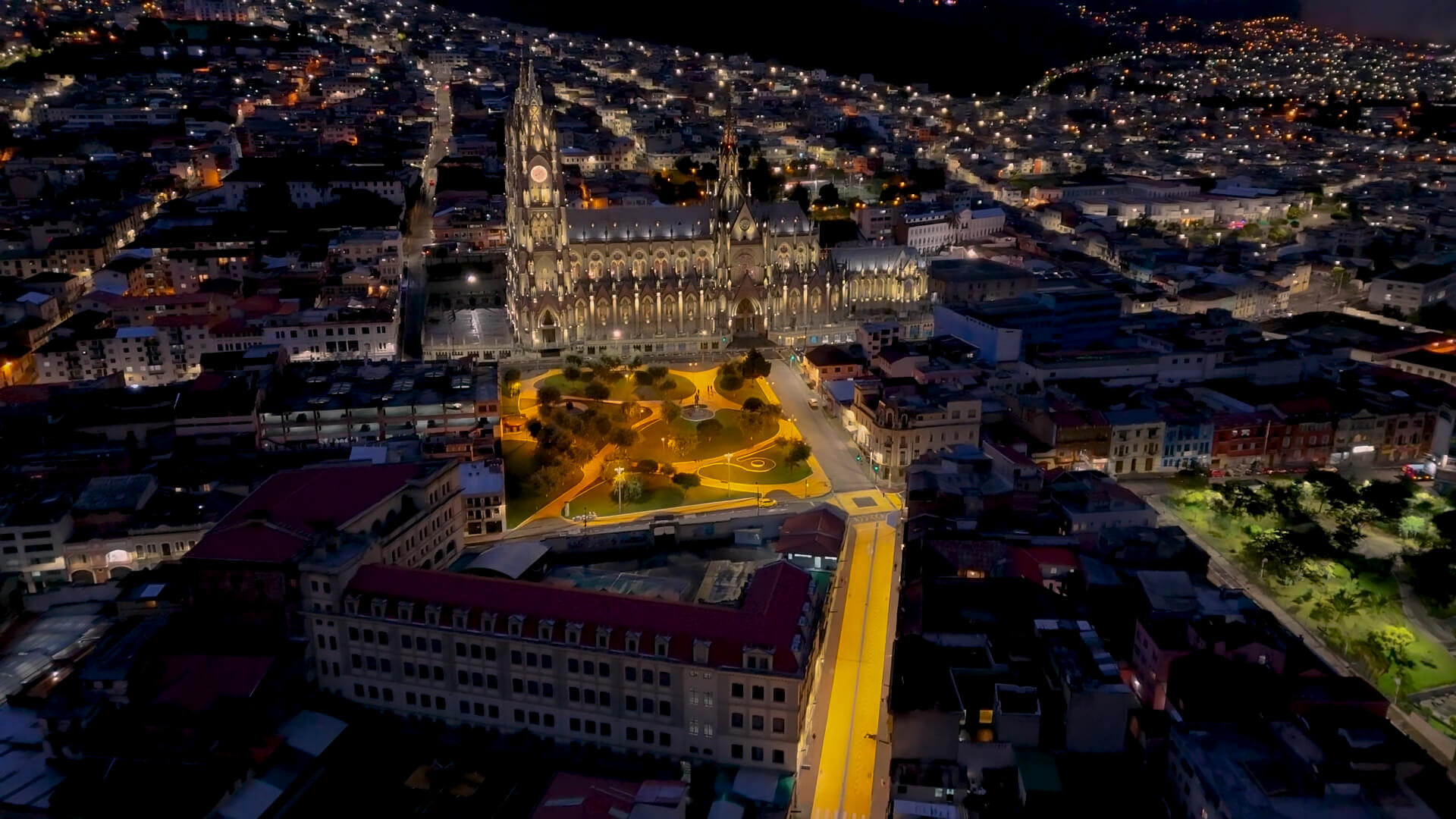The city center of Quito, Ecuador, has been a UNESCO World Heritage Site since 1978. This designation helps preserve one of the world’s most beautiful historic centers, but it also makes intervening within the area a challenge. How does one go about enlivening public spaces in a place that’s enmeshed in building restrictions?
Estudio Felipe Escudero, a local practice with a second office in Madrid, responded to this recently with an impressive temporary urban intervention. CROMA, the Quito-based office said in a statement, is meant to energize civic engagement in the face of political turmoil in Ecuador’s capital city.
Pintulac, an Ecuadorian paint brand, was the client and financier. Estudio Felipe Escudero worked together with local architects, planners, and the Municipality of Quito on the endeavor. “Ecuador has been in a period of major instability, and there is a lack of meaningful engagement between neighborhoods, communities, and social classes,” Felipe Escudero, the studio’s founder, shared.

“As residents of the city,” Escudero continued, “we so often move through quickly, passing from place to place, not noticing the landscape around us. Quito’s center has the potential to bring us together, but is under populated and under appreciated. CROMA encourages a new interaction with the city—a fresh, joyful, and intentional engagement with our cultural heritage.”
Orange: The Color of Joy
CROMA consists of a 1-mile pathway in Quito that meanders through the city’s cobblestone streets, urban stairways, and plazas. It uses non-toxic orange paint that’s lacquered on the ground plane. It starts at the base of Quito’s main cathedral, Basílica del Voto Nacional, and extends to Palacio de Cristal Itchimbia, an Ecuadorian landmark.

Between Basílica del Voto Nacional and Palacio de Cristal Itchimbia, CROMA leads visitors to lesser known parts of the city center that are under recognized for their significance and potential, Escudero shared. This low-cost solution’s goal is to activate the city center as funding for public programs dries up in Ecuador, and political violence increases.
In plan, and in its color scheme, CROMA recalls previous works by Christo and Jeanne-Claude, namely their project in New York’s Central Park, The Gates. There, the artist duo installed 7,503 fabric panels painted orange that formed a serpentine trail within the bucolic setting designed by Frederick Law Olmsted.

“Orange is a color of joy, enthusiasm, and vitality; it stimulates and energizes while also generating warmth, comfort, creativity, and optimism,” Escudero noted. “I was thrilled that Pintulac was excited by the idea of creating a large-scale public work in Quito’s historic center with this color, and it has been a joy to create a pathway through some of the city’s most significant sites.”
The non-toxic orange paint, Escudero continued, will organically wash away from Quito’s streets in the coming months.

